I’ve got a Pure One Classic DAB radio. It looks a bit like this:

Unfortunately time hasn’t served it well as the ‘soft-touch’ case has become a big sticky mess, but it did a fine job in my garage, providing some music to listen to whilst working on my car. I think people probably forget a bit about radios like this these days, preferring phones/apps/smart speakers. These have their place though – no wifi required! There’s also something comforting about live radio, rather than curated playlists on streaming services.
Anyway – my wife decided that I didn’t need the radio anymore in the garage and that it was now hers. She wanted something to listen to whilst working in the study.
This presented a problem: the DAB signal in the study is dreadful (she should use a smart speaker, really).
I have experience in RF Engineering so thought I’d try and improve the signal strength. The telescopic antennas on these radios must be a huge compromise, given then antenna has to work on both FM (88 – 108MHz) and DAB (around 220MHz).
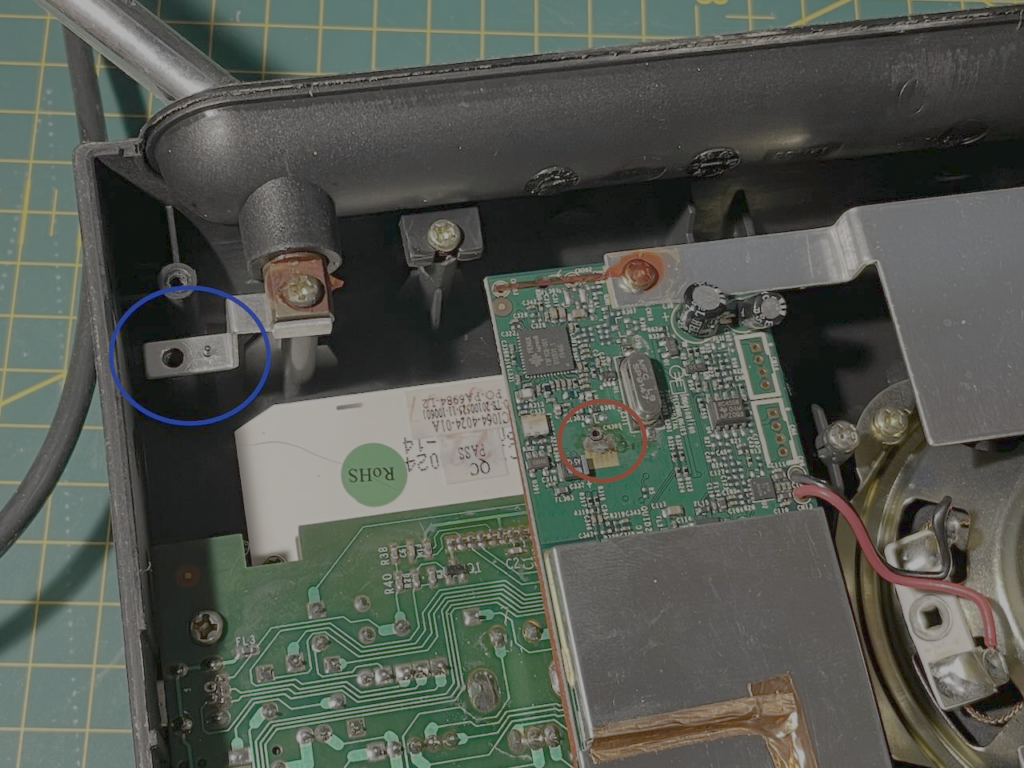
Circled in blue is the connection point for a spade connector, the other end of which connects to the area circled in red. It is a bit bananas that over 200MHz is being received down bent bits of metal and spade connectors, but Pure must know what they’re doing. I assume the telescopic antenna is such a compromise that some metal and a spade connector doesn’t make anything any worse.
What I plan to do is connect a coax cable to the area circled in red – the coax centre to the middle hole and the outer to the exposed area of ground below it. I’ll then feed this coax out to a dipole antenna which I’ll tune to the frequency of the multiplex that Magic Musicals (yes, really) broadcasts on.
A dipole antenna is comprised of two elements which are λ/4 each. I am interested in 217 MHz, which equates to a wavelength (λ) of 1.38 metres. Therefore, each element needs to be around 34 centimetres. I started with 35 centimetres (it’s much easier to make an antenna shorter than longer…). I used the copper earth wire from some Twin and Earth cable and inserted each end into a terminal block, as below.
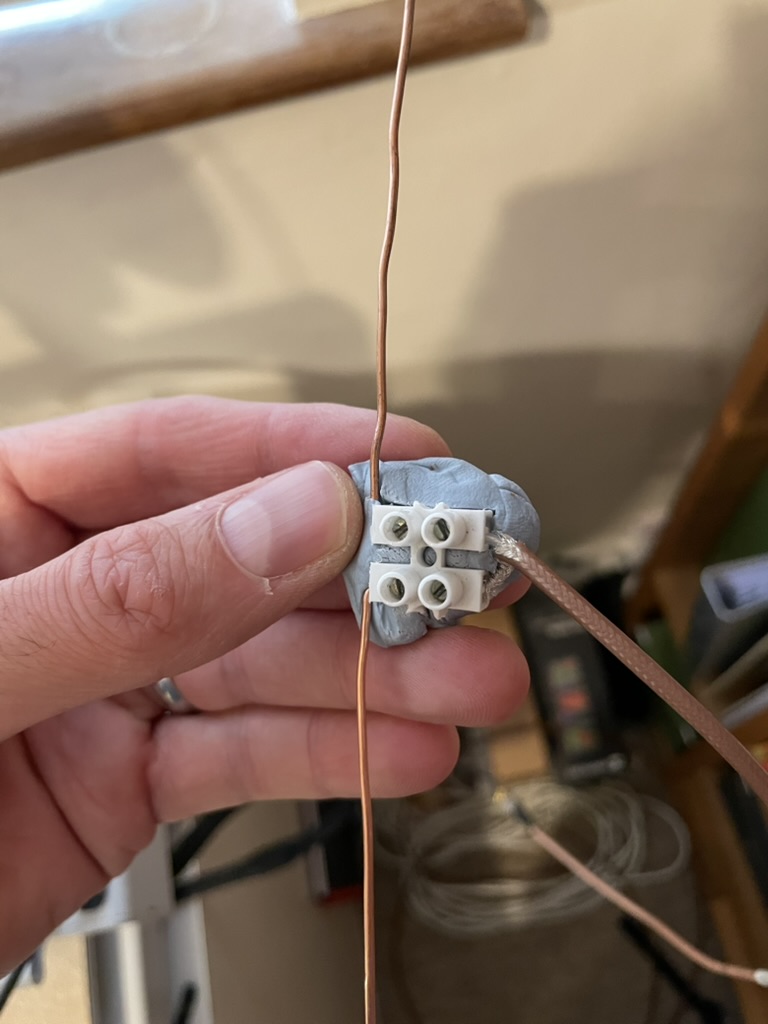
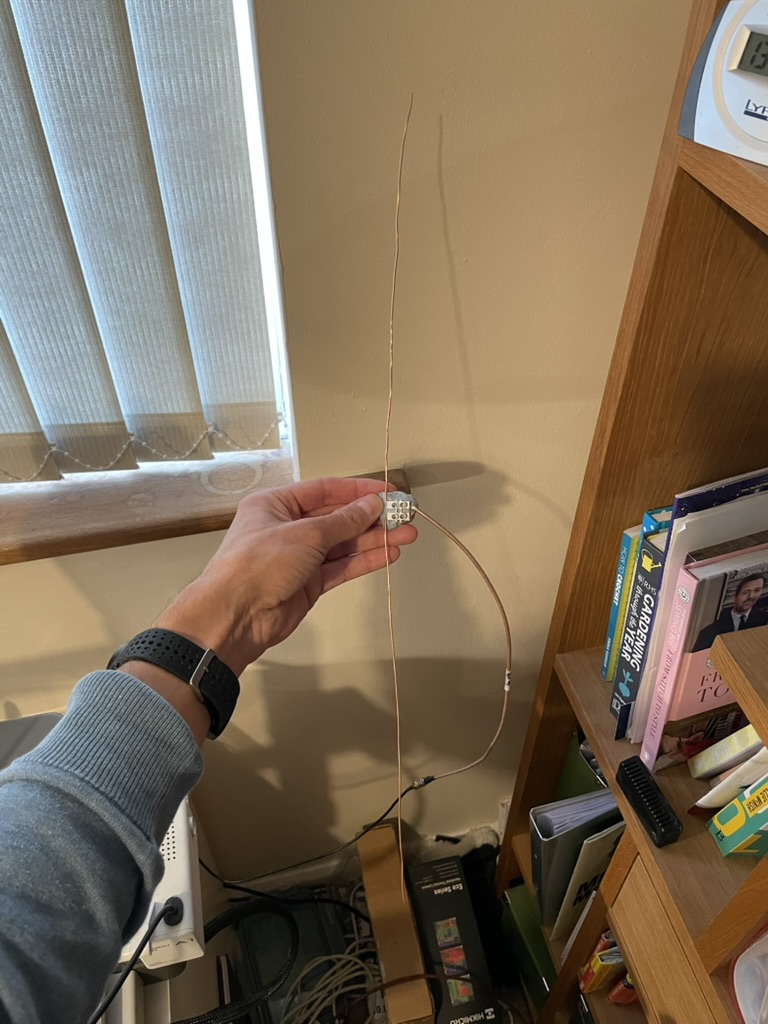
I split some coax into the centre and shield, and fed the centre into one end of the terminal block and the shield into the other.
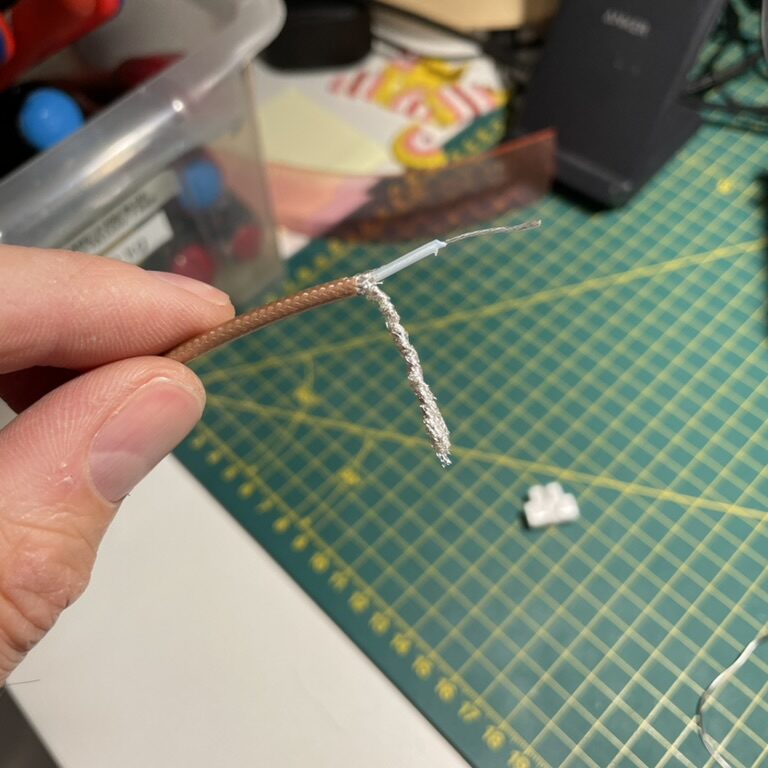
Now – how do I get the antenna to exactly the right length so it resonates at the exact frequency I’m after? To do that I use a Vector Network Analyser. This is a complex piece of test equipment which basically sends a signal down a cable and tells you how much of that signal comes back at you. If some of the signal doesn’t come back at a specific frequency, then that must mean the signal is going somewhere else. In our case it’s going into the ether and being transmitted, which means the antenna is resonating at that frequency, exactly what we want!
I have a NanoVNA which is a very affordable VNA. I set it up with my rigged up antenna with the 35cm copper rods and saw this:
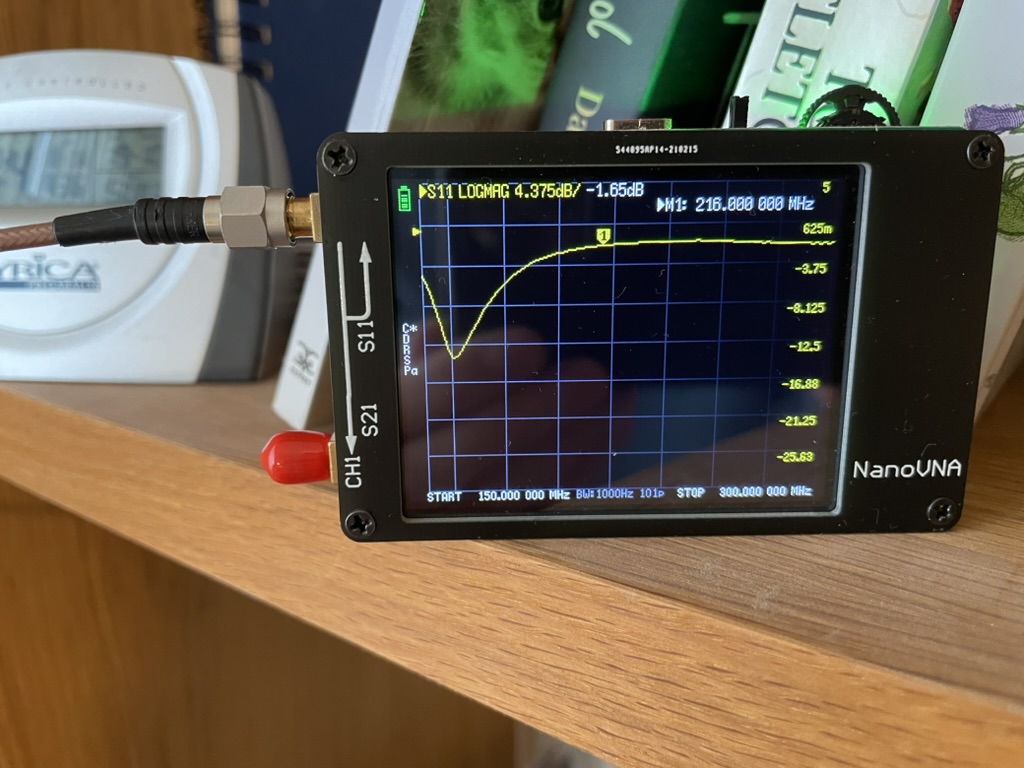
That big dip on the left hand side of the trace on the screen is the frequency that the antenna is currently resonating at, and the marker (the little yellow ‘1’ a bir further along) is the frequency I wish it to resonate at. So – currently we’re too low in frequency. This is good. In order to increase the frequency we need to trim the antenna. As said before, trimming it shorter is much, much easier than making it longer!
A bit of trimming… and….
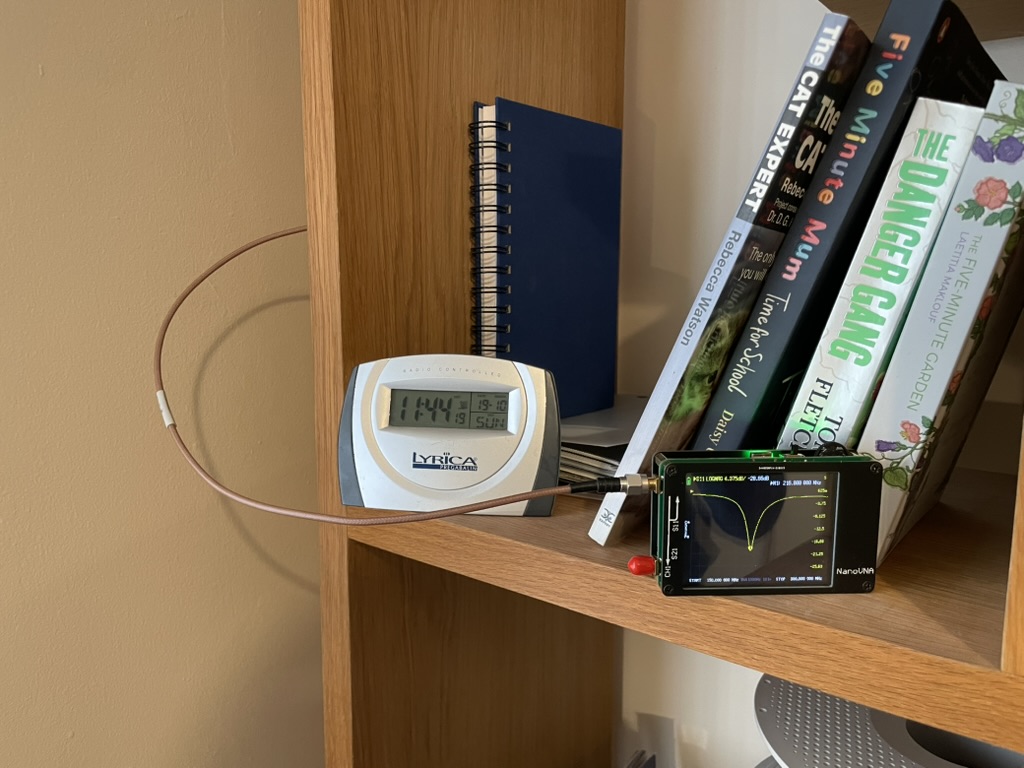
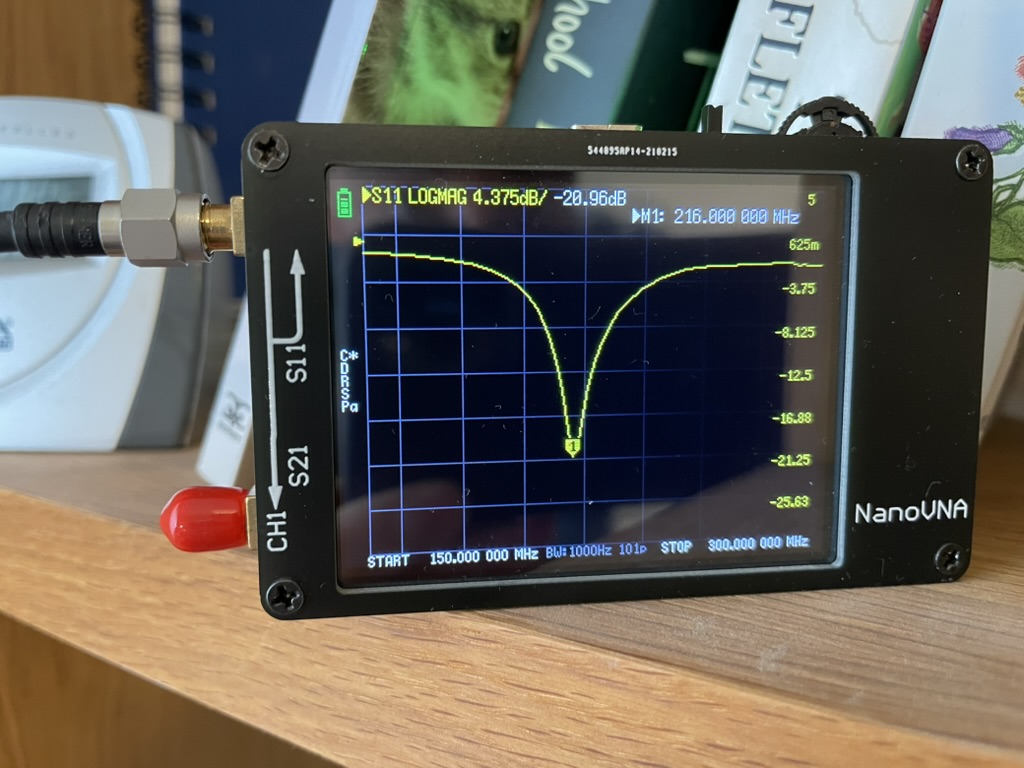
Huzzah!
If you don’t have a VNA, then you could the signal strength meter on the radio. It should start off quite poor when the antenna is too long, then should get gradually better as you trim it, centimetre by centimetre.
This is where I’ve hidden the antenna. It is always best to tune it in its final location, as the frequency can be affected be all sorts of different things.
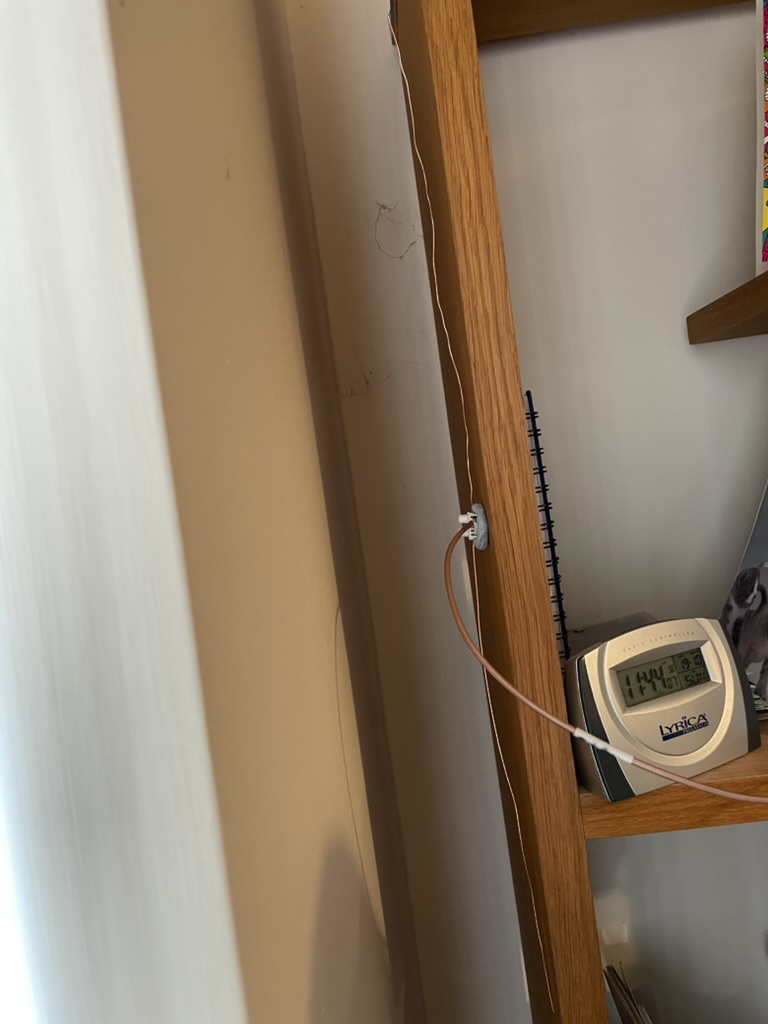
Now all I have to do is feed the coax into the radio and solder it to the existing antenna point:
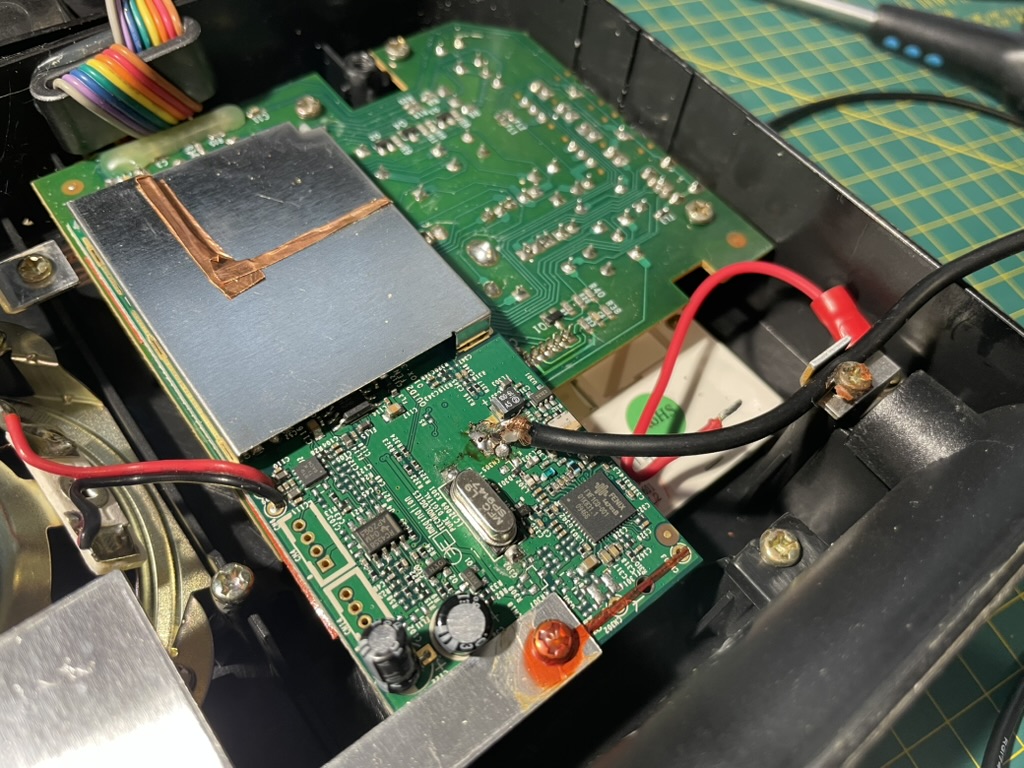
Will it work, I wonder?
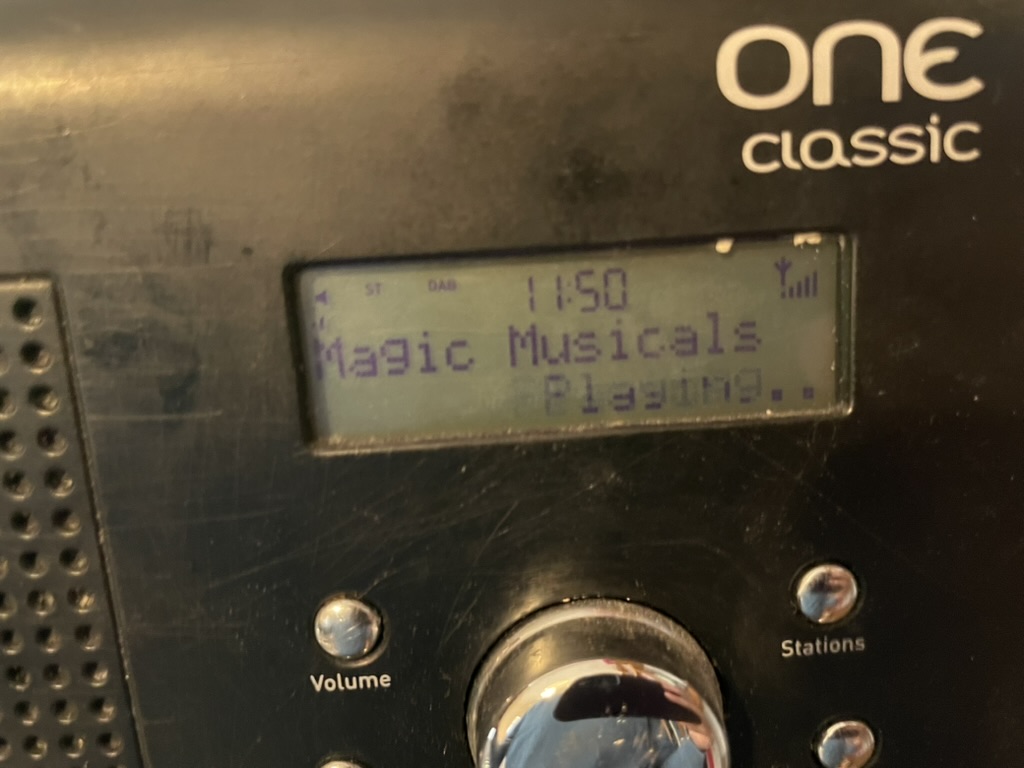
Yes! 5 signal bars!
Previously you couldn’t receive any signal at all, so a really huge improvement, much more than I expected!
Now my wife will be able to listen to Magic Musicals to her heart’s content, and I will work in silence in the garage.
Hi Andy,
A great bit of work and just what I’m looking for to improve my indoor DAB reception.
Can I ask what the final length of the elements turned out to be? Just to get an idea of how close it was to the theoretical value.
Cheers,
Eric.
Good to hear from you Eric!
The final length from tip to tip was 575mm, so around 28cm to 29cm per element. This is a fair bit less than the theoretical 34cm, showing the important of real life measurement.
However, the results are likely to be pretty similar for everyone, so 29cm seems a good number to aim for!